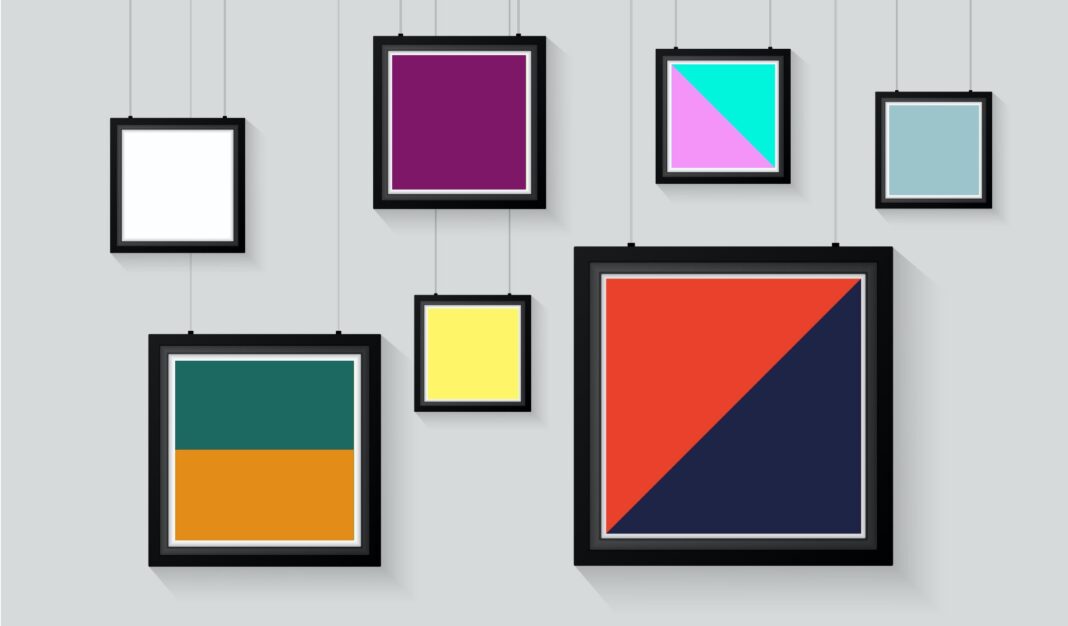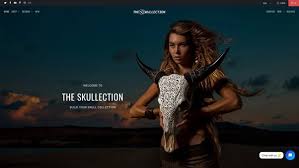Do you feel restless in a yellow room? Does blue cause you to feel without a care in the world? Craftsmen and inside fashioners have since a long time ago accepted that tone can drastically influence dispositions, sentiments, and feelings. “Colors, similar to highlights, follow the progressions of the feelings,” the craftsman Pablo Picasso once commented.
Shading is a strong specialized apparatus and can be utilized to flag activity, impact temperament, and even impact physiological responses. Certain tones have been related with expanded pulse, expanded digestion, and eye fatigue. So how precisely does shading function? How is shading accepted to affect mind-set and conduct?
What Is Color Psychology?
In 1666, English researcher Sir Isaac Newton found that when unadulterated white light goes through a crystal, it isolates into the entirety of the noticeable shadings. Newton likewise observed that each tone is comprised of a solitary frequency and can’t be isolated any further into different shadings.
Further examinations exhibited that light could be joined to shape different shadings. For instance, red light blended in with yellow light makes an orange tone. A few tones, like green and maroon, counteract each other when blended and bring about a white light.
On the off chance that you have at any point painted, you have likely seen how certain tones can be blended to make different tones.
“Given the commonness of shading, one would anticipate that shading brain science should be an all around created region,” scientists Andrew Elliot and Markus Maier have noted. “Shockingly, minimal hypothetical or exact work has been directed to date on shading’s effect on mental functioning,1 and the work that has been done has been driven for the most part by reasonable worries, not logical meticulousness.”
In spite of the overall absence of exploration around here, the idea of shading brain science has turned into an interesting issue in promoting, craftsmanship, plan, and different regions. A large part of the proof in this arising region is narrative, best case scenario, however analysts and specialists have made a couple of significant disclosures and perceptions about the brain science of shading and the impact it has on states of mind, sentiments, and practices.
Your sentiments about shading are frequently profoundly private and established as far as you can tell or culture.
For instance, while white is utilized in numerous Western nations to address virtue and guiltlessness, it is viewed as an image of grieving in numerous Eastern nations.
The Psychological Effects of Color
Why is shading a strong power in our lives? What impacts would it be able to have on our bodies and brains? While impression of shading are fairly abstract, there are some shading impacts that have all inclusive significance.
Colors in the red region of the shading range are known as warm tones and incorporate red, orange, and yellow. These warm tones inspire feelings going from sensations of warmth and solace to sensations of outrage and aggression.
Colors on the blue side of the range are known as cool tones and incorporate blue, purple, and green. These tones are regularly depicted as quiet, yet can likewise bring to mind sensations of bitterness or apathy.
Shading Psychology as Therapy
A few old societies, including the Egyptians and Chinese, rehearsed chromotherapy, or the utilization of tones to recuperate. Chromotherapy is in some cases alluded to as light treatment or colorology.
Colorology is as yet involved today as a comprehensive or option treatment.2 In this treatment:
Red is utilized to animate the body and mind and to expand flow.
Yellow is remembered to invigorate the nerves and sanitize the body.
Orange is utilized to mend the lungs and to build energy levels.
Blue is accepted to alleviate diseases and treat torment.
Indigo shades are remembered to reduce skin issues.
Present day Research on Color Psychology
Most clinicians view shading treatment with doubt and point out that the alleged impacts of shading are frequently terribly overstated. Colors likewise have various implications in various societies.
Research has exhibited much of the time that the state of mind modifying impacts of shading may just be brief. A blue room may at first reason sensations of quiet, however the impact disperses after a brief timeframe.
Nonetheless, existing examination has observed that tone can affect individuals in an assortment of amazing ways:
Warm-shaded fake treatment pills were accounted for as more compelling than cool-hued fake treatment pills in one study.3
Blue-hued streetlamps can prompt decreased wrongdoing as per recounted proof.
Red makes individuals respond with more prominent speed and power, something that may demonstrate valuable during athletic exercises as indicated by researchers.4
Dark garbs are bound to get punishments. Furthermore, understudies were bound to connect negative characteristics with a player wearing a dark uniform as indicated by a review that checked out authentic information of sports groups and what they were dressed.5
Shading Can Influence Performance
Studies have additionally shown that specific tones can affect execution. Nobody likes to see a reviewed test canvassed in red ink, yet one investigation discovered that seeing red prior to taking a test really hurt test performance.6
While red is regularly depicted as compromising, stimulating or invigorating, numerous past investigations on the effect of red have been generally uncertain. The review found, nonetheless, that presenting understudies to red before a test has been displayed to contrarily affect test execution.
In the first of the six investigations depicted in the review, 71 U.S. universities understudies were given a member number hued either red, green or dark preceding requiring a five-minute test.
The outcomes uncovered that understudies who were given the red number prior to stepping through the examination scored over 20% lower than those gave the green and dark numbers.

Shading and Consumer Purchases
Shading brain science recommends that different shades can have a wide scope of impacts, from supporting our mind-sets to causing nervousness. However, would the shade of the items you be able to buy at any point offer something about your character? For instance, would the shade of the vehicle you be able to purchase some way or another connect with a few basic character attributes or idiosyncrasies?
Your shading inclinations why purchasing things may offer something about the sort of picture you might be attempting to project. Shading inclinations, from the garments you wear to the vehicle you drive, can now and then say something concerning how we need others to see us. Different factors, for example, age and orientation can likewise impact the shading decisions we make.
White: As a considerable lot of our perusers have proposed, white can feel new and clean. The tone is frequently used to summon a feeling of youth and advancement.
Dark: Our perusers regularly depict dark as a “strong” shading, which may be the justification for why dark is the most well known shading for extravagance vehicles. Individuals regularly portray the shading as provocative, strong, puzzling, and surprisingly unfavorable.
Silver: It’s the third most well known shading for vehicles and connected to a feeling of advancement and innovation. Super advanced items are regularly silver, so the shading is frequently connected to things that are new, present day, and bleeding edge.
Red: Dreaming of a red vehicle? Red is a striking, eye-catching tone, so favoring this sort of vehicle may mean you need to extend a picture of force, activity, and certainty.
Blue: People regularly depict blue as the shade of dependability and security. Driving a blue vehicle or SUV may show that you are reliable and dependable.
Yellow: According to the specialists, driving a yellow vehicle may imply that you are a glad individual overall and maybe a touch more willing than the normal individual to face challenges.
Dim: The specialists propose that individuals who drive dark vehicles would rather not stick out and on second thought favor something somewhat more unpretentious.
Obviously, the shading determinations we make are frequently affected by factors including value, choice, and other useful worries. That, yet shading inclinations can likewise change in time.7
An individual may incline toward more splendid, more enticing tones when they are more youthful, however end up attracted to more customary shadings as they become older. The character of the purchaser can assume a significant part in shading determination, yet purchasers are regularly intensely affected by variables like cost just as accessibility.
For instance, buying a white vehicle may be less with regards to needing individuals to imagine that you are youthful and present day and more with regards to the environment you live in; individuals who live in sweltering environments normally lean toward light-hued vehicles over dull ones.
Extra Research Is Still Needed
Interest in the subject of shading brain research is developing, yet there stay various unanswered inquiries. How shading affiliations create? How strong is the impact of these relationship on certifiable conduct?
Will tone be utilized to build specialist efficiency or work environment wellbeing? What tones affect buyer conduct? Do specific character types incline toward specific tones? As scientists keep on investigating such inquiries, we may before long get familiar with the effect that tone has on human brain science.
“A large number of these cases need validation as far as experimental help, show basic blemishes (like causal distortion and abstract approval), and may incorporate tidbits introduced as realities,” O’Connor clarifies. “Likewise, such cases regularly allude to obsolete exploration without alluding to flow research discoveries.”
A Word From Verywell
Shading can assume a significant part in passing on data, making specific temperaments, and in any event, affecting the choices individuals make. Shading inclinations additionally apply an effect on the articles individuals decide to buy, the garments they wear, and the manner in which they embellish their surroundings.
Individuals frequently select items in colors that inspire specific dispositions or sentiments, for example, choosing a vehicle shading that appears to be lively, cutting edge, smooth, or trustworworthy. Room tones can likewise be utilized to bring out explicit states of mind, like canvas a room a delicate green to make a quiet mind-set.
So what’s the bottom line? Experts have found that while color can have an influence on how we feel and act, these effects are subject to personal, cultural, and situational factors. More scientific research is needed to gain a better understanding of color psychology.



























